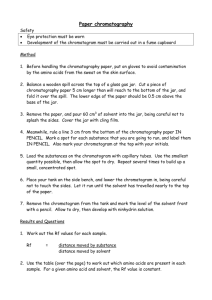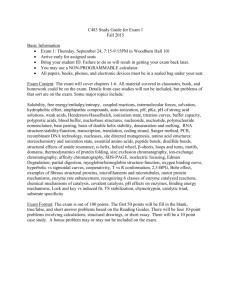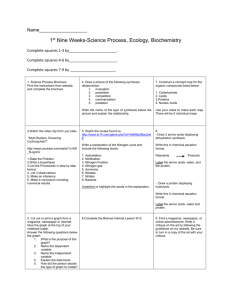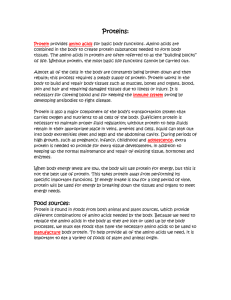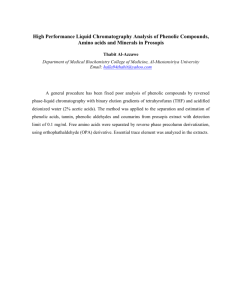Identification of Amino Acids by Chromatography
advertisement
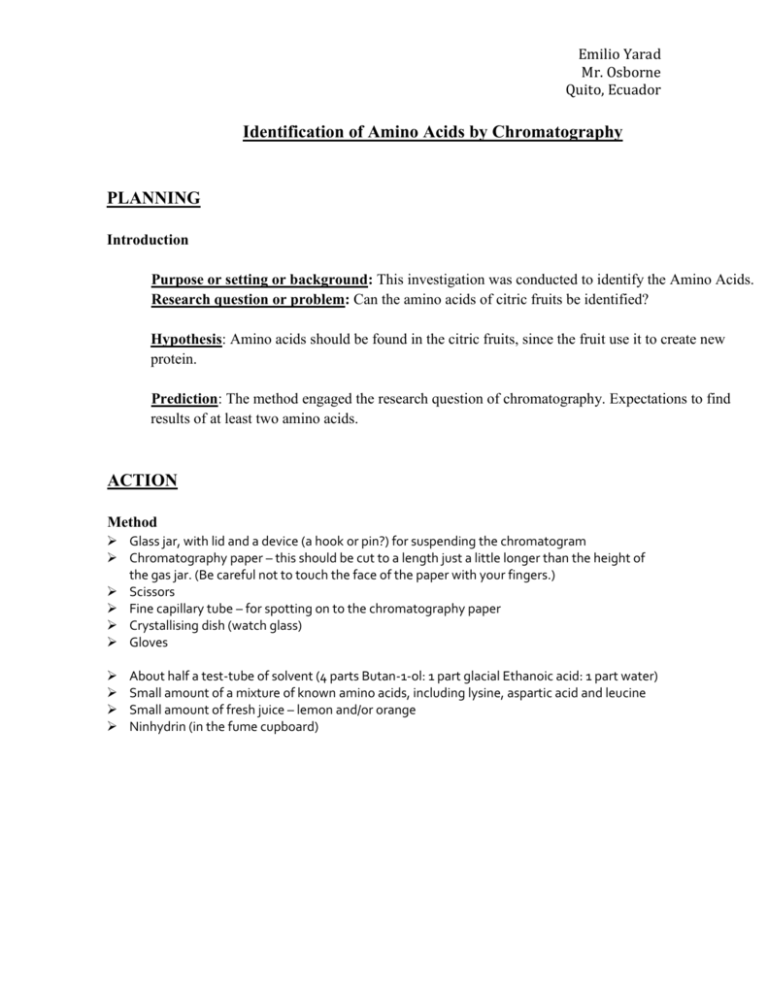
Emilio Yarad Mr. Osborne Quito, Ecuador Identification of Amino Acids by Chromatography PLANNING Introduction Purpose or setting or background: This investigation was conducted to identify the Amino Acids. Research question or problem: Can the amino acids of citric fruits be identified? Hypothesis: Amino acids should be found in the citric fruits, since the fruit use it to create new protein. Prediction: The method engaged the research question of chromatography. Expectations to find results of at least two amino acids. ACTION Method Glass jar, with lid and a device (a hook or pin?) for suspending the chromatogram Chromatography paper – this should be cut to a length just a little longer than the height of the gas jar. (Be careful not to touch the face of the paper with your fingers.) Scissors Fine capillary tube – for spotting on to the chromatography paper Crystallising dish (watch glass) Gloves About half a test-tube of solvent (4 parts Butan-1-ol: 1 part glacial Ethanoic acid: 1 part water) Small amount of a mixture of known amino acids, including lysine, aspartic acid and leucine Small amount of fresh juice – lemon and/or orange Ninhydrin (in the fume cupboard) Emilio Yarad Mr. Osborne Quito, Ecuador Control Variables Dependant Variable Independent Variable Size of chromotigraphic paper control Using a ruler to measure the paper to make sure its 20 cm Amount of solvent Temperature Control Amount will be measured 1 quarter from glass jar Dependent Always on room temperature or less. Emilio Yarad Mr. Osborne Quito, Ecuador Results Results should be tabulated and then treated - graphed and statistically manipulated - and described. Results may be qualitative but should always be quantitative. First practical Errors and limitations EVALUATION Conclusions: the second investigation showed that there were no amino acids present. In the first investigation we found 6 amino acids present. Modifications and improvements: Time of day Climate The actual fruit Manipulation of fruit -These errors could have been improved by doing it on a different time of the day and with a different climate and probably with a different fruit which we hadn’t manipulated as much. BIBLIOGRAPHY This should be a complete list of all resources and references used, including all that have been footnoted. Copy/paste URL's of web pages used. Follow a convention for referencing journals and books. http://www.sciencedirect.com/science/article/pii/000398615490137X http://pubs.acs.org/doi/abs/10.1021/ac60149a007 http://www.sciencedirect.com/science/article/pii/0003269767900097 http://www.macalester.edu/~kuwata/Classes/200102/Chem%2011/Revised%20Amino%20Acids%20%289%201%2001%29.pdf





